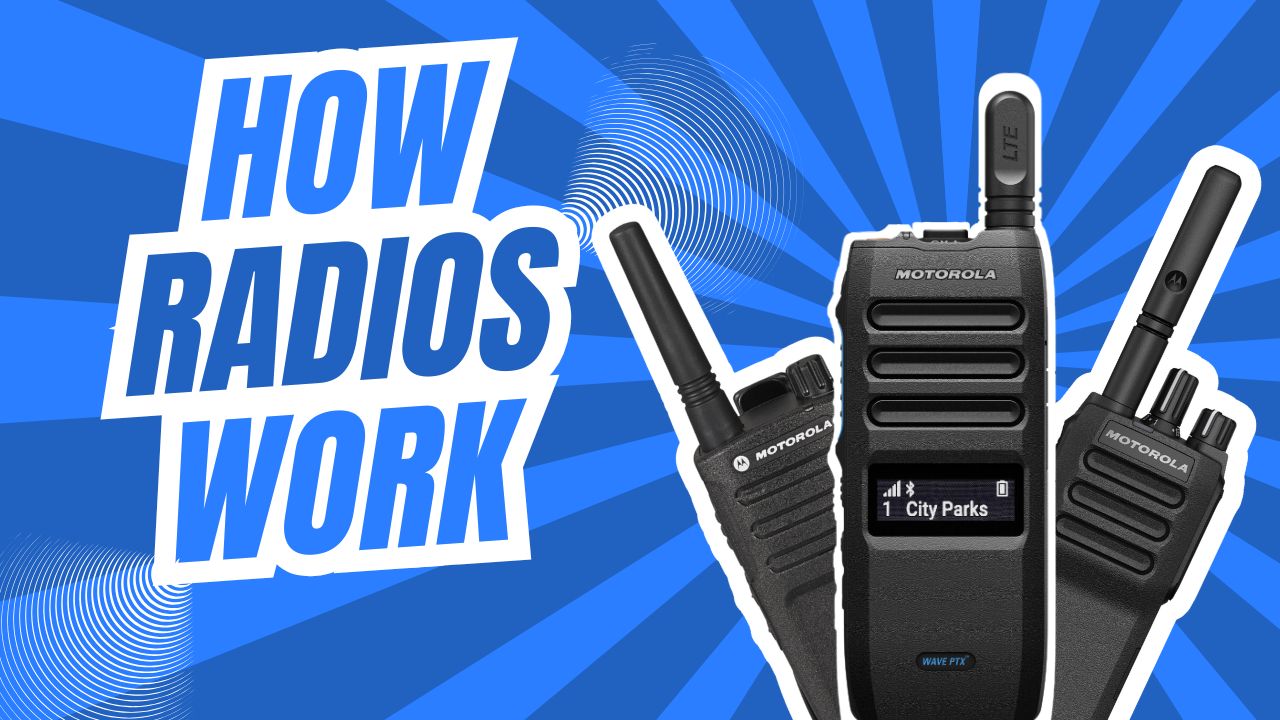How Do Portable Two-Way Radios Work? A Simple Guide
Portable two-way radios, often referred to as walkie-talkies, are essential tools for communication in a variety of industries, outdoor adventures, and emergency situations. They allow people to talk to each other without the need for cell phone towers or internet connectivity. But how exactly do these handy devices work? In this blog post, we'll break down the basic mechanics of portable two-way radios in simple, easy-to-understand terms.

What Are Portable Two-Way Radios?
A portable two-way radio is a handheld device that allows two or more users to communicate over short distances using radio frequencies. They are commonly used by hikers, campers, construction workers, and security teams, providing a reliable form of communication in areas where cell phone coverage might be unreliable.
The Key Components of a Two-Way Radio
To understand how a two-way radio works, it’s essential to know its basic components:
- Transmitter: This converts your voice into radio signals.
- Receiver: It converts incoming radio signals back into audio, so you can hear the other person.
- Antenna: Helps send and receive radio signals.
- Power Source: Usually powered by rechargeable batteries.
- Speaker & Microphone: Built-in components that allow you to talk and listen.
Now that you know the basic components, let's dive into the actual process of communication.
How Do They Transmit and Receive Signals?
Two-way radios operate by sending and receiving radio waves. Here’s how it works step-by-step:
- Press to Talk (PTT): When you press the talk button on your radio, it activates the transmitter. This converts your voice into electrical signals.
- Frequency Selection: These signals are then modulated into radio waves at a specific frequency. Two-way radios often use VHF (Very High Frequency) or UHF (Ultra High Frequency) bands for communication. The frequency is shared among all users of the same radio channel.
- Transmission of Signals: The radio waves are sent out from your radio’s antenna and can travel over short to medium distances, depending on terrain, obstacles, and the radio’s power.
- Receiving Signals: The other radio’s antenna picks up these signals and sends them to the receiver, which converts the signals back into sound. This allows the other person to hear your message.
- Listening Mode: When you release the PTT button, your radio automatically switches to "listening mode," meaning you can now receive incoming signals from others on the same frequency.
The Range of Two-Way Radios: What Affects It?
One of the most common questions about two-way radios is, "How far can they transmit?" The range can vary depending on several factors:
- Power Output: Higher-powered radios can transmit over greater distances.
- Terrain: Open spaces like plains or fields allow signals to travel further, while obstacles like buildings, hills, or dense forests can reduce the range.
- Antenna Quality: A better quality or longer antenna can help improve the range.
- Frequency Band: UHF frequencies generally provide better range in urban environments, while VHF is better suited for open areas.
Analog vs. Digital Two-Way Radios
Two-way radios come in both analog and digital formats:
- Analog Radios: These are the traditional form, where voice signals are sent in continuous waves. They’re generally cheaper but may suffer from more interference.
- Digital Radios: Convert voice into digital data, allowing for clearer sound, better range, and even features like GPS tracking. They are more advanced but also more expensive.
Common Uses of Portable Two-Way Radios
Portable two-way radios have a wide range of applications:
- Outdoor Adventures: Hikers, campers, and skiers use them to stay in touch in areas with no cellular service.
- Event Management: Teams use radios to coordinate security and logistics in real-time.
- Construction Sites: Workers use them to communicate across large sites without relying on cell service.
- Emergency Services: First responders, police, and firefighters rely on radios to coordinate during emergencies.
Advantages of Two-Way Radios
Why do so many people and industries rely on two-way radios? Here are a few key benefits:
- No Need for Cell Service: Unlike mobile phones, radios don’t depend on network towers, making them reliable in remote areas.
- Instant Communication: There's no dialing or waiting for the call to connect—just push a button and talk.
- Durability: Most two-way radios are built to withstand harsh conditions like rain, dust, and extreme temperatures.
- Long Battery Life: Many models are designed to last for hours or even days on a single charge.
Are There Any Limitations?
While two-way radios are incredibly useful, they do have some limitations:
- Limited Range: Depending on the model, most portable two-way radios have a limited range, typically between 1 to 5 miles.
- Interference: In crowded areas where many people are using similar devices, interference can occur.
- No Privacy: Unless you're using advanced encrypted radios, anyone on the same frequency can listen in.
Conclusion
Portable two-way radios are an effective, low-cost communication tool, ideal for both personal and professional use. By converting voice into radio signals and transmitting them over a specific frequency, these devices allow users to stay connected even in areas without phone service. Whether you're coordinating a team or keeping in touch on a hike, two-way radios are a reliable and practical choice.
By understanding how they work and what affects their performance, you’ll be able to make better decisions when choosing the right two-way radio for your needs.

